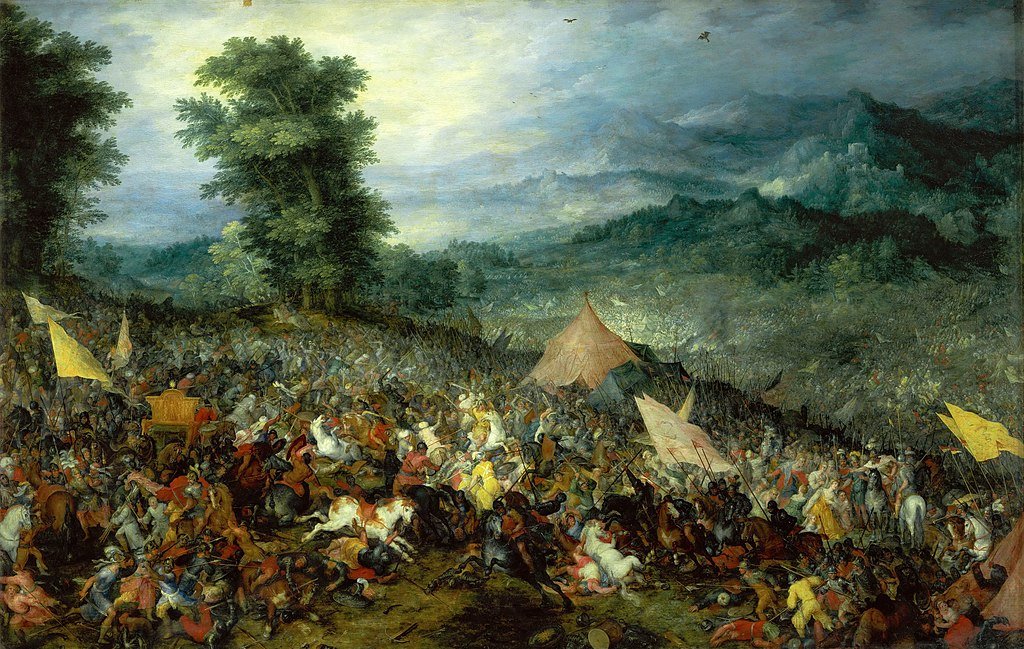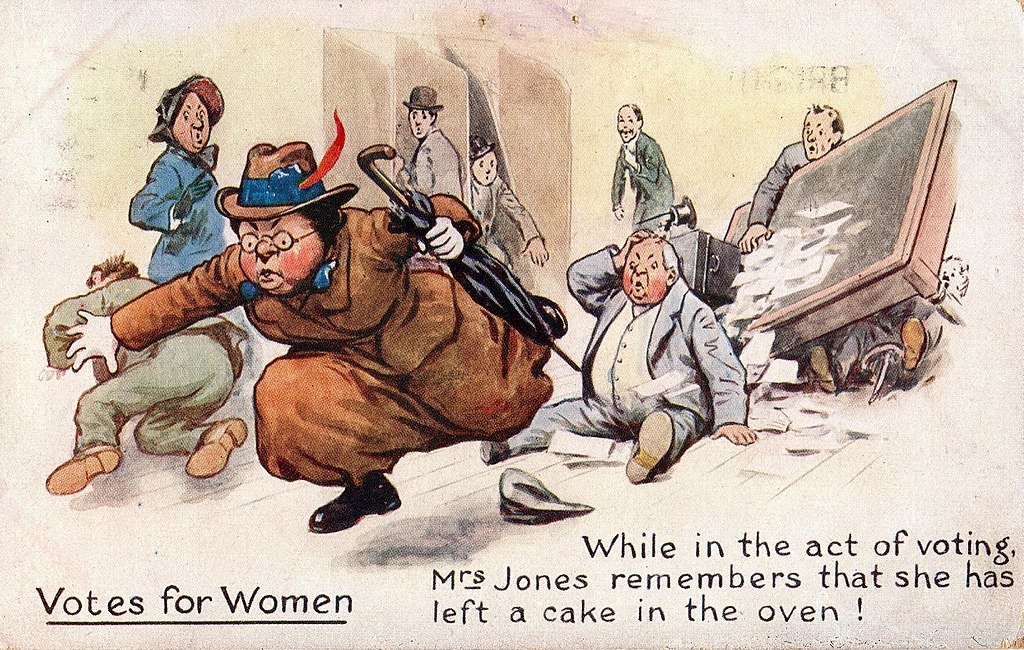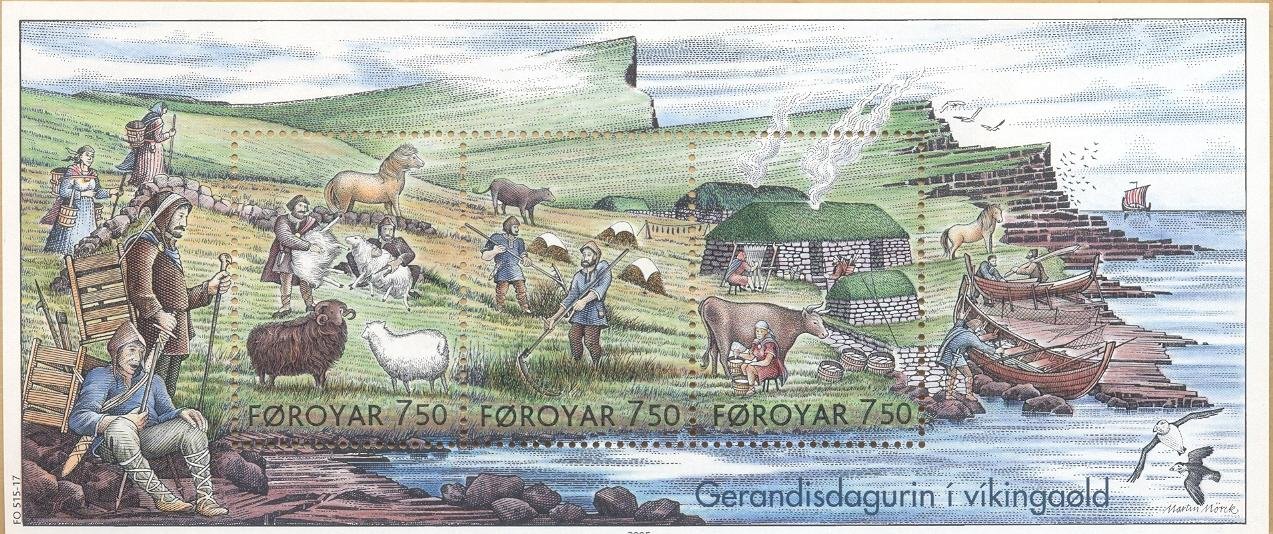Warfare in the Classical World was typified by massed infantry assaults. Iconic is the image of the Greek Hoplite or Roman Legionary marching into battle in impressively synchronized formations to engage in gruesome hand to hand fighting. Cavalry battles tended to be rather rare in comparison. Elements of horse warfare were utilized but mostly limited to reconnaissance and exploiting pursuits of retreating adversaries.
The Battle of Gaugamela, fought in October 331 BCE, is often viewed as Alexander the Great’s greatest victory. It may have involved as many as forty thousand horsemen. It was here, on a level plain somewhere in modern day Iraq that two of antiquity’s greatest superpowers, the Achaemenid Persians and Ancient Macedonians, did battle, culminating in one of the most decisive victories in history.
Brian Hughes explains.
The Battle of Gaugamela by Jan Brueghel the Elder, 1602.
Prelude
Alexander the Third of Macedon, known to history as Alexander the Great, inherited the throne immediately following the assassination of his father, Phillip the Second. Phillip had previously spent several decades conquering the city states of the Greek Peninsula. This was made possible by his shrewd and diplomatic politicking and also the professional Macedonian army in which he almost single handedly reformed from the ground up, subsequently transforming it into the deadliest military force in the Hellenistic World. Alexander not only inherited a tried and tested army but also his father’s ambitious operation to cross the Hellespont and invade the Persian Empire, then the major world power.
Following his initial vanguard, Alexander traversed from Europe and into Asia with the bulk of the Macedonian army and proceeded to score in quick succession a series of audacious victories first at Granicus and then the Battle of Issus where he faced off against the King of the Persian Empire, Darius the Third. It would not be their final confrontation.
In the aftermath of Issus, Alexander chose to not immediately pursue Darius but instead secure his supply lines by marching his army down the Mediterranean coastline through the modern-day countries of Lebanon and Israel and in the process sacking the once thought impregnable fortress city of Tyre in the process. Darius meanwhile retreated into the heart of the Persian Empire in an effort to raise more men in preparation for the next showdown with the Macedonians. Envoys were soon sent to all corners of the Empire not yet taken by Alexander to the various Satraps (Governors) requesting the supply of men. Some even from as faraway as Sogdiana and Bactria, today Uzbekistan and Afghanistan. Alexander would soon turn around and swing east from Egypt and Cyrenaica (Libya) and proceeded through Syria and Mesopotamia. The year was 331 BCE. The battle for the Persian Empire was about to reach its climax.
Preparation
The exact site of the battle is contested to this day. Darius assembled his army at a place called Gaugamela (The Camel’s House) today not far from the city of Mosul. They lay in the direct path in which Alexander and the Macedonian army had planned to take to Babylon. Nestled between the mountains and the Tigris River the plain itself stretched openly for miles granting a considerable advantage to Darius and his numerically superior forces, many of which would fight mounted on horse, chariots, and elephants. Ancient Historians grossly over exaggerated the size of the Persian army, some claiming it to be almost one million. Nonetheless, the army which Darius assembled at Gaugamela was not only enormous (somewhere between fifty and one hundred thousand men) but likewise maintained certain qualitative advantages over the comparatively small Macedonian Army. Intending to make full use of this upper hand Darius ordered his men to clear the chosen spot of battle of any terrain irregularities such as dips and rises so that his cavalry and war machines would have fewer blockers when the time arrived.
Once aware of the location of the Great Kings army, Alexander ordered his men to eschew much of their gear save for their weapons and prepare for a long night march. By dawn the opposing armies were placed only a few miles apart from one another as Alexander convened with his Generals at a council of war. The Macedonian Commanders vehemently argued over how to best negate the considerable Persian supremacy in manpower. Some like Parmenio, one of Phillip’s most trusted Captains had pressed Alexander for a surprise night attack on the Persian camp. This was easier said than done. Battles in and of themselves are exceedingly difficult to coordinate. Thus, a night attack in unfamiliar terrain on this scale in the darkness when it is difficult to distinguish friend from foe was quickly ruled out. Alexander as it would turn out did in fact devise a battle strategy which he believed would win the day. The order was soon given for the army to be fed and properly rested as he himself retired sinking into so heavy a sleep, it has been alleged, that he overslept the next day so confident he was of victory.
Battle
When the day of battle arrived both armies marched under a scorching sun onto the plain and formed up facing one another. It seemed as if the Persian army stretched endlessly as they lined up in two broad columns in which cavalry forces from across the empire with the chariots and war elephants formed the bulk of the center and wings. Darius positioned himself in the center as well, the traditional spot for the King of Kings. Alexander arrayed his men in an almost box-like formation with Parmenio commanding the left flank while the Phalanx and Foot Companions, the nucleus of the mighty Macedonian army formed up in the center. On the right Alexander took personal command along with his elite Hetaroi or Companion Cavalry in addition to other crack forces.
Alexander was determined to open the board with the first move. He proceeded to ride steadily to the right giving the notion of riding around the left flank of the Persian army. Darius was stunned. Did Alexander really intend to envelop his gargantuan force? Having faced this young conqueror before and being aware of his ability to defy the odds and achieve seemingly miraculous victories Darius chose to leave nothing to chance. He ordered Bessus the Satrap of Bactria to shadow Alexander with his lethal Cavalry from Bactria and Central Asia. While this was happening the Macedonian Phalanx in the center began to steadily creep toward the main Persian line. It was difficult for the Phalanx to maintain order over such a distance as the Persian chariots began to charge forward over the very ground leveled only days ago. Darius then committed the bulk of his forces against the increasingly vulnerable Macedonian left flank.
Shockingly, the chariots appeared to inflict minimal damage against the battle-hardened infantrymen who rehearsed tactics for dealing with such weapons. Meanwhile, on the Macedonian left, the situation became more and more desperate. Parmenio proceeded to maintain some semblance of order forming his line into an inverted horseshoe of sorts. This was meant to bog down Persian forces to buy time for Alexander and his companions to initiate a bold maneuver.
Having overextended the Persian horsemen Alexander abruptly wheeled back with his elite cadre and headed for Darius and the Persian center at full speed. Tying up the cavalry force sent to intercept him far to the right, it must have been inconceivable to Darius to see Alexander spearheading a charge and plunging straight towards him through a storm of shield, spears, and sword. Alas it was too much to handle. As his right and center columns began to fold Darius ordered his chariot to turn around and flee. The demoralized Persians seeing this quickly followed suit as most of the army began to collapse. Except on the Macedonian left. By now Parmenio’s small and beleaguered force was facing certain annihilation as the Persian swarmed past his flank nearly surrounding him and even raiding the Macedonian encampment. Alexander was then confronted with a dilemma. He could pursue Darius thus sealing the fate of the Persian Empire but lose his army in the process or come to the aid of his General. He chose the latter and brought to bear the full power of the Macedonian Cavalry slamming into the Persians in an awesome battle where thousands of men and horses fought savagely until it became too much for the hard-pressed Persians who then fled.
Aftermath
Gaugamela was a complete victory for Alexander and the Macedonians. The Persian army was utterly defeated as Alexander marched to Babylon and the heartland of the Persian Empire unopposed. The wealth and strategic advantage that would accompany these acquisitions would prove monumental as Alexander turned his gaze further eastward - it seemed virtually nothing could satisfy his ravenous ambition for glory and further conquest. Darius retreated deep into the vastness of his crippled empire, attempting in vain to raise further troops so that he might reclaim his throne. It would ultimately be to no avail as Bessus, who commanded the Persian left at Gaugamela led a coup betraying and assassinating Darius and then proclaimed himself Emperor in his stead. Alexander would eventually track down Bessus before executing him as he continued to push east only turning around several years later at the stubborn behest of his homesick army who would not follow him any further. By now Alexander had claimed the entirety of the Persian Empire and ruled from the Balkans to the border of India.
Alexander would likewise meet a premature death in June 323 BCE at the age of thirty-two. It is a mystery to this day as to how he passed, however.
Few in history have acquired the epitaph “The Great.” Alexander had proven himself to be one of the best military leaders in world history winning countless battles under all kinds of circumstances. Gaugamela remains his greatest victory in both its daring and outcome, so wrestling of control of the Persian Empire.
What do you think of the Battle of Gaugamela? Let us know below.
Sources
Alexander The Great, Philip Freeman: Simon and Schuster
Carnage and Culture Landmark Battles and The Rise of Western Culture, Victor Davis Hanson Random House INC.
















